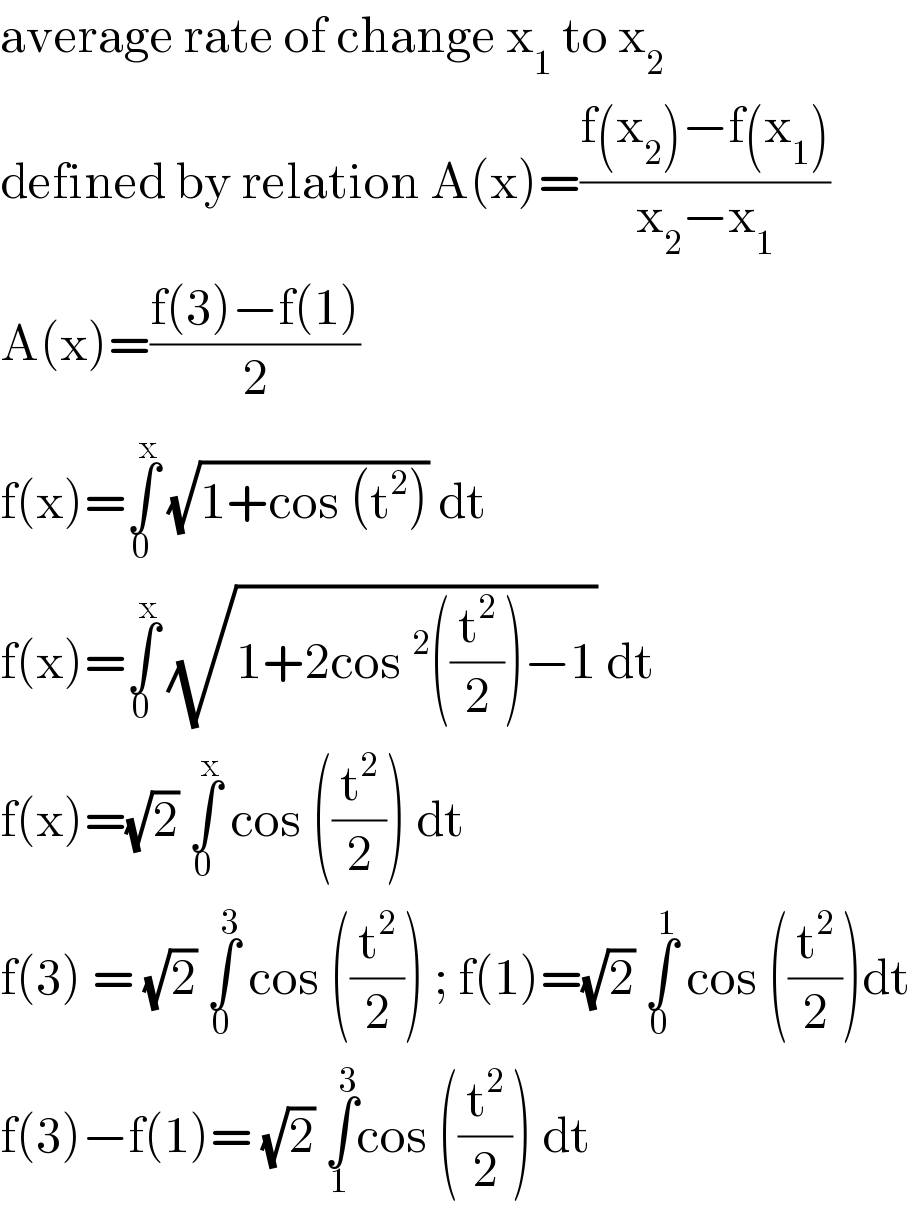
Question and Answers Forum
Question Number 122469 by benjo_mathlover last updated on 17/Nov/20

Commented by benjo_mathlover last updated on 17/Nov/20

Commented by benjo_mathlover last updated on 17/Nov/20

Commented by benjo_mathlover last updated on 17/Nov/20
![The average rate of change of the function f(x)=∫_0 ^x (√(1+cos (t^2 ))) dt over the interval [1,3] is nearest to ...](Q122503.png)
Commented by liberty last updated on 17/Nov/20

Commented by mr W last updated on 17/Nov/20
![A(x) = (1/(b−a)) ∫_a ^b f(x) dx is the average value of function f(x) in [a,b].](Q122510.png)
Answered by liberty last updated on 18/Nov/20

